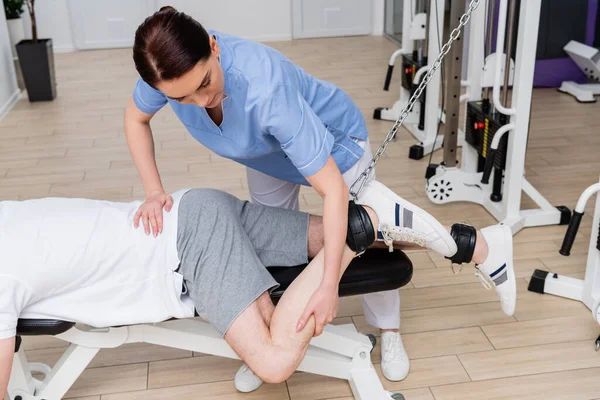When patients come into physical therapy they expect about a clear plan of action. They should also be able to find out if their therapist is in-network with their health insurance company.
The right physical therapist will provide effective communication and create a comfortable environment during sessions. They should be able to help motivate patients and encourage them throughout their recovery journey.
1. Look for Experience
Whether your doctor has recommended one or you have been self-referring, it is important to look for an experienced therapist who understands your condition. You want someone who has a track record of achieving good outcomes for other patients with your same problem.
During your first consultation, they should set a timeline for you that is reflective of your goals and expectations. This can be an indicator that they are focused on your progress and will give you the time and attention you deserve. They should also be willing to try new techniques and approaches to see if they improve your results. Look for a clinic that offers one-to-one patient care like La clinica in chicago.
2. Look for Qualifications
It’s important to verify that a physical therapist is licensed and has the proper credentials to practice. You should also look for additional certifications and specializations that align with your specific needs.
For example, if you are experiencing jaw pain or headaches, consider finding a therapist who has additional training in these conditions. It’s also important to look for specialized training in other areas, such as dry needling or strength and conditioning.
Another way to find a qualified physical therapist is to ask for recommendations from family, friends and colleagues. This can help you feel more comfortable entering a new healthcare journey. And online reviews and testimonials can be helpful in determining which therapists best meet your needs.
3. Look for Personality
A great physical therapist will put you and your needs first. They should communicate clearly and frequently about your progress. They should be patient, kind and caring.
A well-rounded PT also possesses the ability to be creative and think outside of the box when developing treatment plans for each patient. They are always learning and staying up to date on the latest research.
Ask friends and family for recommendations, as well as your doctor. If you don’t connect with a therapist within the first few sessions it is okay to politely request to be moved to someone else. It’s just as important to be happy with your therapist as it is with any other healthcare provider.
4. Look for Value
The best therapists will be able to use their extensive knowledge of the many approaches to treating conditions and injuries to build a plan that is unique to you. A good therapist will also be willing to try new treatment approaches and recognize when they aren’t working.
A great therapist will provide clear instructions and explanations about what they will do during your visits. They will give you an idea of how long recovery will take and be honest about any challenges that may arise. They will also be able to provide you with a cost estimate before beginning treatment, including what your insurance or health care plan covers.
5. Look for Availability
A physical therapist is most likely to be available at times that suit your schedule. Find out their clinic’s hours and whether or not they offer telehealth appointments, which can be useful for people with busy lifestyles.
It’s also worth checking if a therapist is in-network with your insurance provider. This can have a number of benefits including allowing the therapist to spend more time on treatment without having to bias their care to modalities that are covered by your insurance.
6. Look for Results
When choosing a physical therapist you’ll need to ensure that they can offer open communication, clear explanations and involve you through every step of your treatment plan. This will make the process of recovery much more comfortable and less stressful.
Also, look for a therapist that specializes in movement analysis and emphasizes active treatments. This means they’ll spend most of the session working one-on-one with you to ensure that your exercises are being done correctly. This is in contrast to PTs that use passive pain-relief options as the primary focus of their care. This is often a red flag. They may simply be turning patients in and out quickly without proper attention to their needs.
